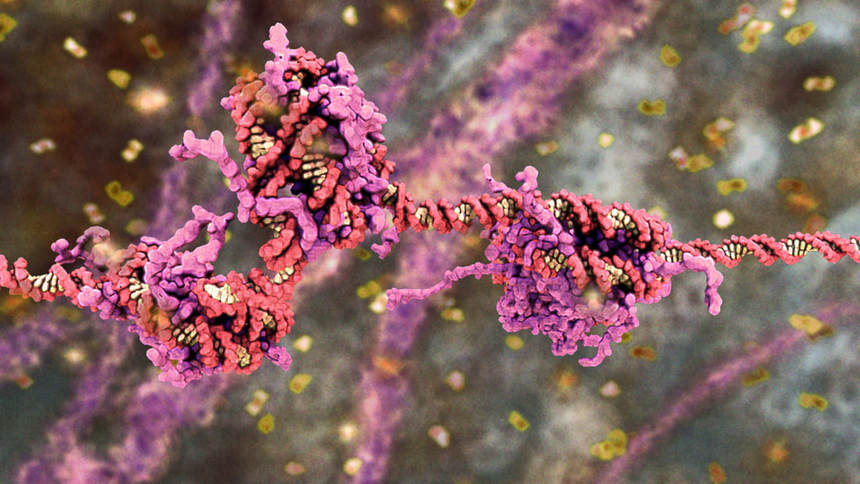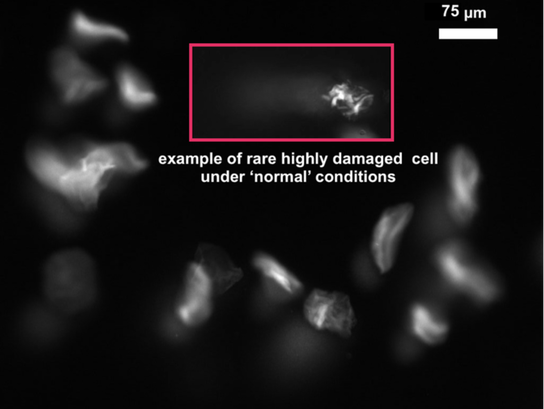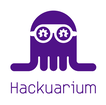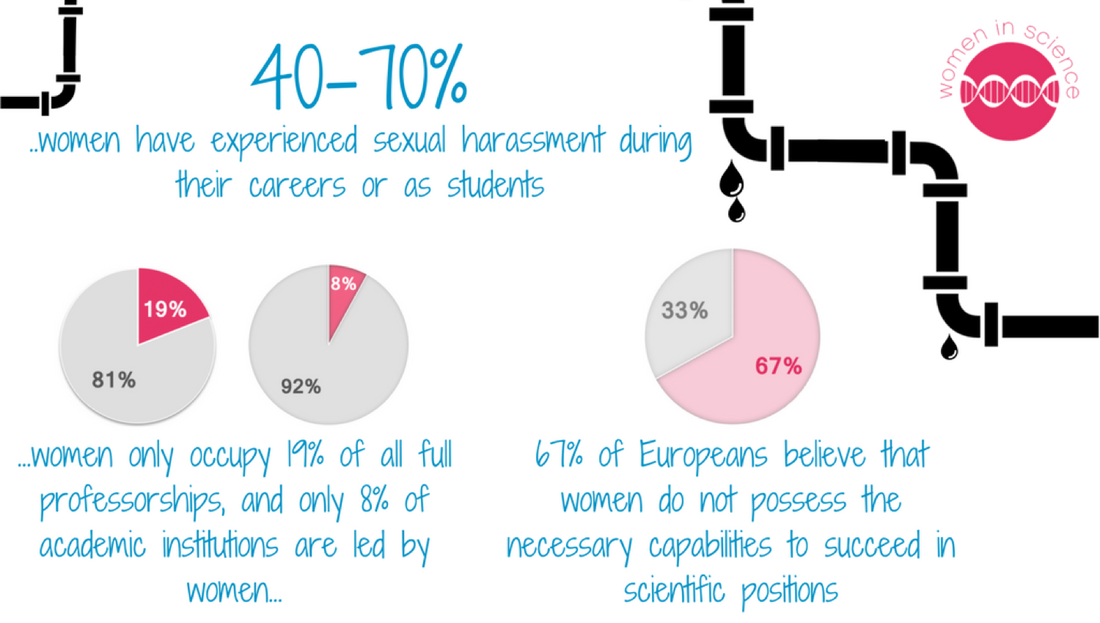After training in molecular genetics and microbiology, then conducting research at a variety of academic institutions, I have discovered another way to have a fulfilling career as a woman scientist outside of academia. In recent years, I began to help others not only to understand common risks to health, but to pursue research themselves. Citizen science is a growing domain, and supporting people to identify problems and investigate solutions through research can be very rewarding. My aim is to encourage people to acquire tools for critical thinking, for a better future for us all, by ensuring science is for everyone. Genomic Integrity Another woman in science, Rachel Carson, pointed out in her 1962 book "Silent Spring" the clear dangers of massive pesticide use on the integrity of our genetic heritage. Her concern, similarly shared by myself, is based on molecules and cells. We are all made of cells, about 10 trillion in every person. Each cell is a little bundle of life full of purpose, with dynamic activities including gene expression, energy production and molecular synthesis. Use, damage and repair of molecules all happens at amazing temporal scales. Genetic factors in cells are very complex, with active RNAs, epigenetic markers and stable DNA chromosomes that must be actively rearranged, for example, for immune system function. Therefore, making a short descriptive phrase to encompass it all seemed like a good idea. In 2009, the term 'genomic integrity' was proposed to include all the molecular genetic details of cells, as a new 'big picture concept' for public health efforts. In 2013, the public service group Action for Genomic Integrity through Research! (AGiR!) began to provide information and promote research into these dynamic cellular processes and associated risks to health. AGiR! activities focus on how our choices can make a great difference toward limiting damage to genomic integrity. A very basic example of a common habit that disrupts genomic integrity is smoking cigarettes, which both directly damages DNA and prevents its repair. This impact to cells is the reason smoking, a risk factor for basically all types of cancer and many other diseases, is really bad for you, outside of the addictive effects of nicotine.  A depiction of three nucleosomes, the central element of DNA packing like 'beads on a string' - in our cells' nuclei. This image was submitted by the talented molecular artist, Drew Berry, for the AGiR! Art Call, that challenged people to think about all the dynamic activities going on in their cells. In 2005, I learned that certain hair dyes had been already been reported to contain mutagenic substances in the 1970s. (1). Furthermore, hair dyes can even contain the same compounds that makes smoking such a problem (2) by causing direct DNA damage that induces mutations. Something so widely used and strongly marketed was, in fact, harmful for cells' genomic integrity. Yet, somehow, these findings did not cause the outcry they warranted. One reason for this was that the early bacterial method used to demonstrate mutagenic activity was argued as not applicable to humans. However, as the chemistry of DNA, RNA and proteins in cells of every species on this planet is similar and related evolutionarily, this argument does not refute the findings. The fact that so many activities and products can mutate DNA or cross-link cellular components (3), means our genomic integrity is regularly at great risk. Fashion choices, such as tanned skin or chemically curled or straightened hair, can also endanger health. It is evident that women are particularly affected, sometimes becoming literal 'fashion victims' in their pursuit of the latest trend, for example, by developing malignant melanomas from the use of sun-tanning beds (4). Today the risk of developing cancer is extremely high, and of course men are not immune to this trend. Although 1 in 8 women are predicted to develop breast cancer in their lifetime, with survival dependent on the stage of diagnosis; 1 in 9 men are similarly predicted to be diagnosed with prostate cancer, yet only 1 in 41 will die from it (5).
the BRCA genes, especially known for heightened risk of breast cancer, but also linked to many other cancers, including prostate cancer in men. The BRCA genes help ensure that during DNA repair correct sequences are restored through a cellular process termed 'homologous recombination,' rather than adding mutations (7). Hereditary cancers are relatively rare, affecting about 10% of the population, but can cause people at risk to take drastic measures. What if instead, we could limit the negative impacts to genomic integrity from external exposures? Pursuing an active lifestyle, eating proper nutrition for example, may limit intrinsic sources of damage and perhaps boost processes to ensure 'perfect' DNA repair. Raising public awareness can help us make better choices, to live better, and limit exposure to products or activities that can negatively impact genomic integrity. While protecting genomic integrity is a major challenge, there is hope. More than half of cancers can be prevented (8). Our choices and actions will affect us all, especially the future generations of all living beings. How to make science more inclusive? DIT-Research & Open Access Citizen Science As a woman in science, I believe if society pursues its current path, we will never solve global or local problems. Inspirational ideas about trans-disciplinary DIT-Research (Do-It-Together) and citizen science have come from groups like the volunteer association Hackuarium, which provides access to open labs available for public use. The aim is to democratise science for all, thereby building knowledge and making science more accessible to everyone. For example, two collaborative projects of AGiR! at the Hackuarium lab allow people to assess levels of DNA damage through analysing their own cheek cells. See the micrograph images below on cheek cell comets.  Cheek Cell Comets Classic methods like this comet cell assay, allow you to assess levels of DNA damage - even in your own cheek cells. The image in the pink box shows a second micrograph highlighting a damaged cell. Violaine Regard, Jennifer Veillard, and Vithooban Thavapalan Summer interns 2018 at Hackuarium Ultimately, my hope is that such citizen science efforts may help us define more protective measures for genomic integrity. Hackuarium member projects frequently include entrepreneurial elements that innovate current practices to find creative solutions. Clearly, the recent trend of open science laboratories internationally is very promising for us all. Hackuarium has open nights every Wednesday, sometimes including presentations or events, and bringing people together to work collaboratively. Come join in and see if some research might answer your questions of interest! In conclusion, science should be for everyone. Making research methods more accessible and open will increase understanding and make a better, safer, healthier world for us all!
References
0 Comments
On February 11, the world commemorated International Day of Women and Girls in Science – an occasion on which we are called together to recognize that future progress and sustainable development depends on unlocking the full potential, capabilities and ideas of women and girls in science. However, we are far off from reaching equality, equity and parity. Women currently represent less than 30% of the research and development (R&D) workforce worldwide. In Switzerland, we barely surpass the average, with only 32% of R&D roles held by women (1). While the number of female students in the sciences is rising, only a small percentage of these women make it into academic careers, especially at the highest levels. Currently, the biggest challenge facing women in science in Switzerland is the striking gender imbalance that exists at the highest rungs of the academic ladder: women only occupy 19% of all full professorships, and only 8% of academic institutions are lead by women (2). A survey from the University of Lausanne (UNIL) found that the gender ratio of principal investigators was 75% male to 25% female - a shocking difference given that the ratio of postdoctoral researchers is equal (3). Where is the leak in the women in science pipeline? From the bench to the boardroom, women in science face pervasive discrimination. Despite advancements in recent decades, female researchers are still paid less, promoted less frequently, receive fewer grants and are more likely to abandon their careers when compared to men with similar qualifications (2). Gender bias, whether conscious or unconscious, is observed at many different levels, and can unfortunately break academic careers. Imagine, up to 67% - two of every three Europeans – believe that women do not possess the necessary capabilities to succeed in scientific positions (4). Not to mention a study from Yale that showed scientists rating job applications perceived candidates to be less competent when they had female names. Applicants with male names were not only more likely to be selected, but also to be offered higher starting salaries and more career mentoring (5). As if gender bias was not enough, the National Academies’ Committee on Women in Science, Engineering and Medicine, recently concluded that “somewhere in the range of 40 to 70 percent of women have experienced sexual harassment during their careers or as students,” and that “this range of prevalence was strikingly consistent across different studies” (6). In a recent article in Science, sexual harassment is aptly defined as a “productivity tax,” for female scientists, taking up unnecessary time and energy, and leading to the avoidance of co-authored manuscripts or joint grant applications with male colleagues (7). It also marks a major push factor for women to leave academia, ultimately amounting to a lost potential not only for the academic institution and the advancement of science itself, but also for the progression of women in science now and in the future. Other studies have pointed out that the time when female researchers move from postgraduate training to higher level positions often coincides with the time for family planning decisions. This poses difficult career questions, made more challenging by the fact that scientific research is dominated by short-term contracts with poor job security. Indeed, children have significant impacts on career trajectories for women. Specifically, women with children are 35% less likely than men with children to attain tenure-track positions (8). Further, mothers in academia often face a “baby penalty,” incurring losses to their salary, contributing to the gender wage gap (9). Moving forward: How do we fix the leak? During my PhD and postgraduate studies in life sciences, the insidious nature of gender bias, discrimination and harassment was shocking, and unfortunately, all too nonchalant. Based on many discussions over the years with fellow female colleagues, I can say first hand that yes - the institutional and personal productivity tax is, lamentably, still being paid in Switzerland. But, there is hope – there is light at the end of the leaky pipeline More and more female researchers are coming forward and creating an essential dialogue about their challenges. In response, institutions must commit to creating safe spaces and mechanisms to incubate potential solutions that arise from this dialogue. To combat conscious and unconscious bias, discrimination and harassment, institutions should implement comprehensive training to students and staff at all levels. Institutions should also provide transparent criteria for the promotion of researchers and actively encourage more women to take on leadership and management roles. Finally, initiatives to support work-family balance can alleviate the toll on lost productivity for young parents – both male and female scientists alike. However, institutions alone are not enough to catalyze effective change. We need wider and more diverse networks, working in collaboration to effectively dismantle the barriers facing girls and women in science. This requires an attitude change to challenge traditional and harmful stereotypes - not only at the institutional level, but crosscutting all domains from the classroom, to the laboratory, the boardroom, and importantly - in the home. When reflecting with female colleagues about the most important modalities for tackling gender bias in our respective studies and careers, the clear common denominator was the active presence of female mentors. A key factor that inspires women to pursue scientific paths, and to remain in them, is having successful female role models who have pursued a similar career and met head on those challenges. Such mentors provide an aspirational roadmap, lend confidence, and most of all, create a critical sense of belonging. This is where organisations such as Women in Science Switzerland can play a fundamental role. WiSS encourages active interactions and knowledge exchange between science and society through local educational initiatives for both adults and children, thus tackling prejudice head on. WiSS also provides a critical network of local, engaged female leaders and builds a platform for exchange, collaboration, and mentorship. At a recent WiSS luncheon, an undergraduate female student asked me if we could have lunch to discuss career options. I agreed and prepared some ideas. But, towards the end of our chatty lunch we hadn’t reached the topic of jobs, so I asked about how I could help. She responded - "honestly, it is just nice to know another female scientist, and to get to eat lunch with her.” I understood. We are all social animals. We need to feel part of a tribe. We need to feel a sense of belonging, a reassurance that yes, this is where we are supposed to be. Women and girls belong in science, have the undeniable right to study science, work in science, and most importantly - lead in science. On February 11, we celebrate this right, and must come together as a global community to ensure that it is upheld. References
|
Archives |





 RSS Feed
RSS Feed
